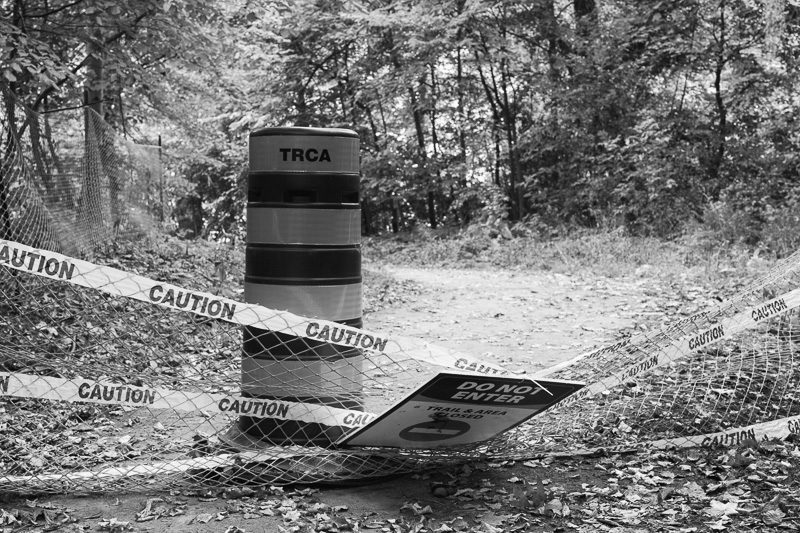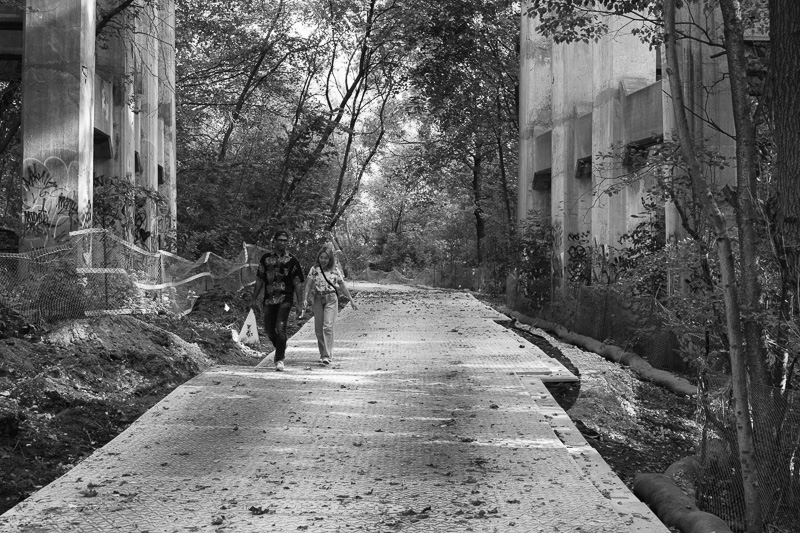Construction has blocked my usual path into Yellow Creek where I go to watch the slow dissolution of a Toronto ravine. There’s a notice fastened to a temporary orange fence:
Notice of Construction
Yellow Creek Below Summerhill Gardens
Emergency Works
…
Toronto and Region Conservation Authority (TRCA) is preparing to undertake emergency erosion control works along a 90 metre section of Yellow Creek below Summerhill Gardens in the City of Toronto. The scope of work includes removing an outflanked undermined stone and mortar retaining wall and realigning the overflow channel away from the base of the slope to mitigate the risk of slope failure.
Slope failure. No shit. For years, I’ve been documenting erosion there and it doesn’t extend for a mere 90 metres; it goes right up to Mt. Pleasant cemetery a kilometre to the north. This is the endemic neglect one can expect from a long string of mayors and city councillors who have drunk the neoliberal Kool-Aid: slash government, lower taxes, defund social spending on things like public health, social housing, road repair, snow removal, libraries, public parks and, of course, the TRCA. And so, when it comes to dealing with Toronto’s most significant geological feature (its ravines) and most significant associated phenomenon (erosion), the city is reduced to addressing issues only when they become emergencies. This is necessarily a formula for guaranteeing that the city function in perpetual crisis.

I entered the section that has been cordoned off. They have laid down big industrial sheets so that the Caterpillars (not the insect kind but the industrial kind) can crawl along the path without getting bogged down in the mud or precipitating a tumble into the creek. I justified my little act of trespass on the basis that it’s important to maintain an ongoing documentation of the site. If you like, let’s call it a longitudinal study conducted over years—decades even—to track the life of a small segment of a Toronto ravine.

I thought I’d be alone. Instead, there was a steady flow of people—lovers, dog walkers, cyclists—passing through the fencing at either end of the project as if it was invisible. Trespass seems to be the rule rather than the exception.
